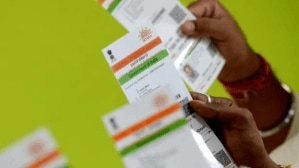By GP Madaan
India is the world’s fourth-largest economy as of 2025, and it is well on course to become the third-largest, with its GDP projected to reach $7.3 trillion by 2030 from the current $4.2 trillion—a long stride towards milestone of the nation’s aspiration of becoming a Viksit Bharat by 2047. Positioned at a critical juncture in its economic journey, the nation needs a powerful mix of consistent policymaking and far-reaching economic reforms. In his latest book, Corporate Insolvency—The Road to Viksit Bharat: Law, Policy and Practice, veteran insolvency expert and lawyer Sumant Batra advocates that a robust insolvency regime is intrinsically connected to a nation’s economic growth and aligns the insolvency discourse with national aspirations to realise the goal of a Viksit Bharat. He illustrates the transformative journey of the Indian economy and proposes forward-looking, visionary reforms aimed at positioning India as a global insolvency hub.
Linking insolvency reforms to economic resilience
In his book, Batra considers the subject of insolvency from a broader geopolitical perspective and argues that the policy choices we make will determine whether our insolvency system renders the economy vulnerable to potential threats or serves as a shield against disruptions and economic shocks caused by geopolitical developments. The book is also a fitting response to the growing perception that the sheen of the Insolvency and Bankruptcy Code (IBC) is fading.
Rather than adhering to a traditional section-wise exposition, the book is structured around the broader logic of the insolvency system. It is presented in four parts, encompassing a total of thirty-six chapters. The first part of the book discusses historical facts leading to the insolvency reforms after India’s Independence in 1947. The opening chapter in Part One offers a compelling historical account, setting the stage by tracing the incorporation of the British East India Company during the reign of Queen Elizabeth I, its entry into India, and the financial crisis that led to its dissolution—considered the first corporate bailout in history. It discusses the rollout of IBC and records its journey and outputs of eight years from 2016 to 2024, and the development of jurisprudence. It also explains each intervention made by the Parliament and major changes brought by the Insolvency and Bankruptcy Board of India (IBBI) by way of dynamic regulations, and steps taken by other regulators and agencies for IBC’s effective performance.
Bold proposals for next-generation reforms
Part two of the book critically examines, inter alia, the effectiveness of corporate insolvency resolution and liquidation processes; and the institutional architecture supporting the IBC, critically evaluating functioning of the National Company Law Tribunal (NCLT) and IBBI, while suggesting measures for improvement. Batra, who has been associated with insolvency reforms in India since 1997, says NCLT was conceived by the Eradi Committee (1999) to solve the problems of that era, and is not an institution designed to meet the needs of 21st century India. IBBI, he points out, has grown distant from realities of recent times and needs to reinforce its connection with the emerging market.
The third part proposes several bold and unconventional policy recommendations and reforms for India’s insolvency ecosystem. These include economic empowerment of municipal corporations and need for a municipal debt restructuring framework to help achieve this goal; impact of climate change on business and changes in IBC to address this problem; application of mediation; robust insolvency system for small enterprises with unlimited liabilities; investment in research and thought leadership, and use of ancient wisdom for modern day policy making, amongst many others. He asserts, if implemented, many of these initiatives could enable India to capitalise on the unprecedented opportunity to emerge as a $55-trillion economic powerhouse by its centenary year.
The fourth part of the book stands out for its unique approach, offering a succinct yet comprehensive synthesis of the entire text through 33 thoughtfully distilled headnotes. This concluding chapter draws inspiration from the ‘33 koti’, a reference to the 33 types or groups of deities in Hindu tradition. The headnotes effectively capture the breadth and depth of the author’s analysis, ranging from actionable policy suggestions to conceptual proposals that merit further research and deliberation.
Former Supreme Court judge, Justice AK Sikri, in the foreword of the book, writes, “It (book) serves as an invaluable tool for policymakers and practitioners alike, distilling complex ideas, reform proposals, and nuanced observations into accessible takeaways.” Amitabh Kant, former CEO of Niti Aayog, in his afterword, writes, “The book crystal gazes into the future and sets aspirations for next generation reforms needed to meet the lofty goals of Viksit Bharat”. Sanjeev Sanyal, member of Prime Minister’s Economic Advisory Council, in the additional foreword of the book suggests constructive destruction to introduce next-generation reforms.
In his blurb, Mark Bloom, chairman of International Insolvency Institute, says, “This book is many things at once—it is a historical narrative, a hands-on guide, a work of academic rigour, and above all, a visionary manifesto for legal and economic reform, positioning India to achieve its bold and aspirational objectives.” Alastair Beveridge, president, INSOL International, in his praise of the book, states, “Batra has long championed high standards in the insolvency industry and (through this work) challenges current and future leaders to continue this important journey.”
The IBC has proved to be an effective legislation but the real potential of the insolvency system is yet to be fully exploited. It is imperative for policymakers to incorporate futuristic policies in IBC, and maintain rigorous oversight of its implementation, both to enhance the credibility of the domestic insolvency framework and to establish India as a globally competitive hub for restructuring and insolvency resolution.
GP Madaan is managing partner, Madaan Law Offices, and Chair, NCLT & IBC committee of PHDCCI.
Disclaimer: Views expressed are personal and do not reflect the official position or policy of FinancialExpress.com. Reproducing this content without permission is prohibited.
Corporate Insolvency—The Road to Viksit Bharat: Law, Policy and Practice
Sumant Batra
EBC
Pp 1,440, Rs 4,995








